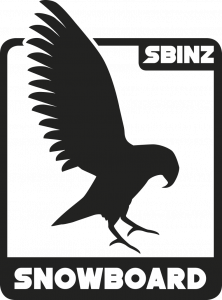Turn Forces

Gravity
An efficient rider knows this and works with gravity rather than against it to travel down the mountain. As a snowboarder rides down a mountain, his or her descent is modified by the terrain ridden. If they allow gravity alone to dictate their descent, they will take the most direct route down the hill, which is down the fall line. To alter this path, they apply forces using their body and board.
Centripetal Force
When their board is placed on edge, they are able to apply force through their body towards the centre of the turn. This is centripetal force. The higher the edge angle, the stronger the platform they create, thus the greater the centripetal force that can be applied.
At the beginning of the turn gravity acts upon the rider pulling them down the hill and into the turn. They must be patient and move with gravity. Through the control to the completion of a turn, riders apply centripetal force through their board to be able to grip the snow and steer through the turn. Here, the rider must be correctly aligned and balanced over the edge to maintain control and resist the pull they may feel towards the outside of the turn.
Law of Inertia
The pulling sensation a snowboarder feels towards the outside of the turn is sometimes called centrifugal force (although it is debated whether this is a force in itself). Scientifically speaking, this is known as the law of inertia. Put simply, if a rider is moving at a constant speed in a straight line, they will keep moving in this straight line unless acted upon by a force. For example, this force could be a movement made by the rider to edge or steer the board, or a change in fall line. When considering this in a turn, if the edge angle is low and speed is high (i.e. a lack of centripetal force), it can result in the board losing its grip on the snow and washing out. If a rider were to apply too much centripetal force they would fall over to the inside of the turn.
Friction
Another force that has a direct result on the ability to move across the surface of the snow is friction. Different snow types will create varied levels of resistance or friction, ice has very little and wet powder has a lot. We have the ability to adjust this force to a degree by applying a lubricant in the form of different waxes to the base of the snowboard to reduce the amount of friction and enabling the board to slide better.

